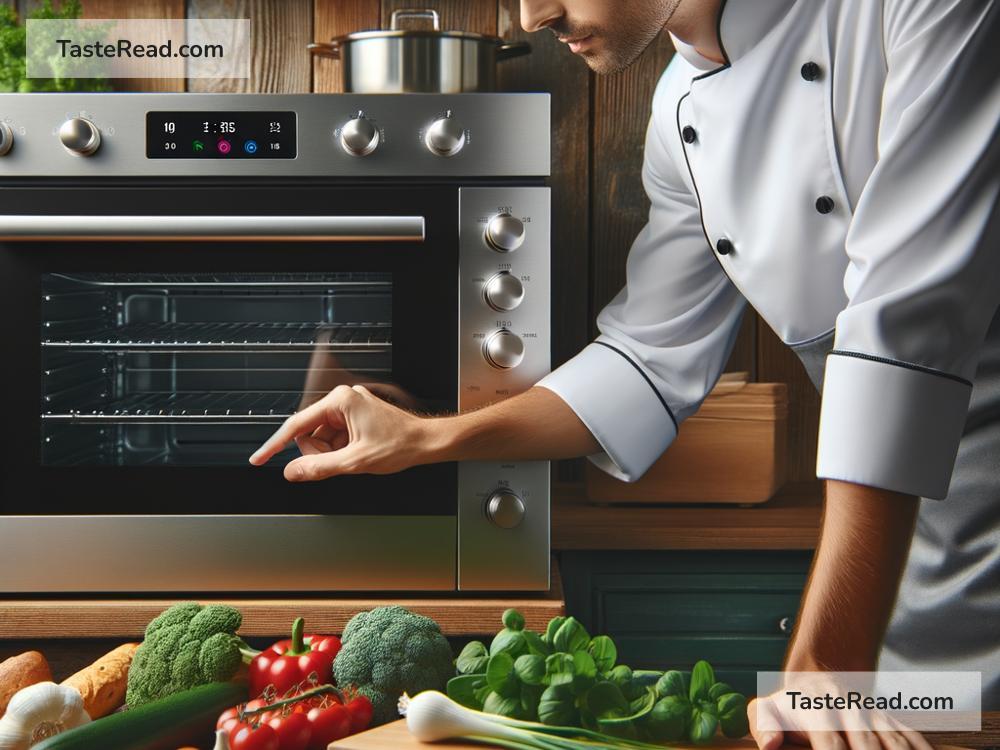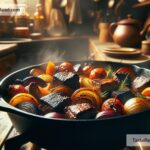The Science of Cooking with Humidity: Techniques and Tips
Cooking is both an art and a science. While it often feels creative, there’s a scientific process happening in your kitchen each time you cook. One of the key components that influences cooking is humidity. Understanding how humidity works can improve your meals, whether you’re baking bread, roasting meat, or steaming vegetables. In this blog, we’ll explore the science of cooking with humidity, share helpful techniques, and offer tips to make your dishes tastier.
What Is Humidity in Cooking?
Humidity refers to the amount of moisture or water vapor in the air. When you cook, humidity plays a big role in how heat interacts with food. The moisture in the air can affect the texture, flavor, and appearance of your dishes.
For example:
– High humidity in cooking adds more moisture to food. This is useful when steaming or braising soft foods.
– Low humidity can dry out foods faster, leading to crispy surfaces (like the crust of baked bread or roasted chicken).
By understanding humidity, you can control the cooking environment to achieve the results you want for your recipes.
Why Does Humidity Matter?
To understand why humidity is important in cooking, let’s look at some examples:
-
Baking Bread
Have you ever baked bread and struggled to get a perfect crust? A humid oven helps form a delicious crispy crust while keeping the inside soft. When water vapor surrounds the bread in the oven, it prevents the outer layer from hardening too quickly, allowing the bread to expand fully. Later in the baking process, the moisture escapes, leaving behind a crisp crust. -
Roasting Meats
When roasting meats (like chicken or beef), the level of humidity affects the texture. A low-humidity environment causes moisture in the meat to evaporate faster, resulting in golden, crispy skin or seared edges. On the other hand, high humidity creates tender, juicy meat that’s not as dry. -
Steaming Vegetables
Using humidity to steam vegetables is an efficient way to preserve their natural colors, flavors, and nutrients. While boiling vegetables may dilute some of their nutrients into the water, steaming uses moisture from water vapor to cook them without excess water contact.
Clearly, understanding how humidity interacts with food can help you cook better meals!
Cooking Techniques That Use Humidity
Different cooking methods work with humidity in unique ways. Let’s explore some of the most common techniques:
1. Steaming
Steaming is the simplest way to cook with humidity. In this method, food is placed in a vessel above boiling water, where it cooks gently in steam. This technique is great for vegetables, seafood, dumplings, and even desserts like puddings. Steaming keeps food juicy and prevents it from drying out.
2. Braising
Braising combines dry and wet cooking methods. Food is first browned in a pan, then cooked slowly in a liquid (like broth or wine) with a lid to trap moisture. This technique uses high humidity to tenderize tougher cuts of meat and create rich flavors.
3. Sous Vide
Sous vide is a modern cooking technique where food is vacuum-sealed and cooked slowly in water at a precise temperature. The sealed bag keeps all of the food’s moisture locked in, producing perfectly tender and juicy meats, vegetables, or even eggs.
4. Using a Steam Oven
Steam ovens are growing in popularity because they use controlled humidity to bake or roast foods with specific results. Adding steam to the oven can help achieve perfect pastries, evenly baked bread, or juicy roast meats.
5. Covering or Wrapping Food
Another way to cook with humidity is by wrapping or covering food with foil, parchment paper, or leaves (like banana leaves). This traps moisture, creating a high-humidity environment for cooking delicate ingredients, such as fish.
Tips for Cooking with Humidity
Whether you’re a beginner cook or experienced in the kitchen, here are some tips to help you control humidity while cooking:
-
Add Water When Needed
If your recipe calls for a humid environment, you can add water or liquid to the pan. For instance, place a dish of water in the oven when baking bread to create steam. -
Use Lids or Covers
Covering a pot, pan, or baking dish traps moisture while cooking. This is essential for dishes like stews, soups, or braised meats. -
Look at the Weather
Surprisingly, the weather outside can impact cooking! On humid days, baked goods may need adjustments in cooking time because they absorb more moisture from the air. Keep that in mind when creating recipes sensitive to moisture levels. -
Experiment with Steam
If you own a steam oven or other tools that let you control humidity directly, experiment with different levels to see how they affect your food. Steam can make pastries fluffier, vegetables brighter, and roasted proteins juicier. -
Check Moisture Levels in Meat
If you want a crispy roast with low humidity, pat your meat dry before cooking. Removing excess moisture helps develop browning and crispness.
Conclusion
Humidity is a powerful tool in cooking that can completely change the way food tastes and feels. Whether you’re steaming vegetables for freshness, braising meat for tenderness, or baking bread for an airy crust, understanding how moisture interacts with heat will help you create better dishes.
By trying different techniques and experimenting in your kitchen, you can master the science of cooking with humidity. Find out how adjustments to moisture levels can transform your meals and impress your friends or family. Happy cooking!
By understanding humidity in cooking, the science behind your favorite meals becomes much clearer—and tastier!


